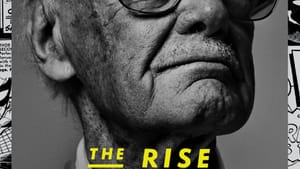Stay in the Loop
BSR publishes on a weekly schedule, with an email newsletter every Wednesday and Thursday morning. There’s no paywall, and subscribing is always free.
Knocking down Marvel myths
‘True Believer: The Rise and Fall of Stan Lee’ by Abraham Riesman

Some biographies, especially those written about iconic figures, have a tendency to mythologize and canonize their subjects. Journalist Abraham Riesman’s True Believer: The Rise and Fall of Stan Lee, the new biography of the American comic-book legend Stan Lee, is very much not one of those books.
A towering figure’s true start
Riesman, a longtime writer for New York magazine who did some memorable reporting about Lee in the last years of his life, has written an exhaustively researched biography of the man born Stanley Martin Lieber, who died in November of 2018 at the age of 95. The book, originally scheduled for release last fall before it was delayed at the last minute, is a definitive look at this giant of comic books. It's not a full-on hatchet job, but it's also not the slightest bit apprehensive about knocking down myths.
The author's research concludes that while Lee is undoubtedly a towering figure in the history of comic books and in American popular culture as a whole, much of what's traditionally known about him is myth. And that starts with how Lee first came to the company that would become Marvel. Rather than getting the gig by writing a letter, the young Lee had been brought aboard by a relative.
Reluctant collaborator
Lee, Riesman writes, had a hand in the creation of most of the major Marvel characters. But Lee also had a tendency to claim sole credit for work that was more collaborative. He was not the sole creator of Spider-Man, Captain America, or most of the other characters, even though he frequently claimed otherwise in the ensuing years. He was even, as comic-book fans know, called out on this by such former collaborators as Jack Kirby.
The book also shows that Lee, despite being more closely associated with comic books than perhaps any other person in history, always looked down upon the medium. Lee always really wanted to be a movie producer, a vocation at which he had limited success.
And even while the Marvel Cinematic Universe emerged as a pop-culture colossus when Lee was in his 80s and 90s, Lee had little to do creatively with those movies, aside from his cameos—nor did he profit from them as much as you would think he did.
Creator and subject of myth
Lee is also repeatedly shown as not a particularly savvy businessman. Two of his post-Marvel companies not only failed to come up with hits, but also collapsed in financial scandal. Lee was susceptible to young men on the make who turned out to be swindlers and grifters, including several who vied for influence during the final years of Lee's life. The book also shows the Marvel legend making poorly thought-out financial decisions throughout, driven largely by the lavish spending habits of his wife and daughter.
The book carries through to Lee's ugly final days, when multiple factions were fighting over access to him, and accusations surfaced of both sexual harassment and elder abuse.
The through-line of True Believer is that Lee was a creator of myth, and simultaneously a subject of it. The book deserves credit for attempting to get at the truth behind both perspectives.
Image description: The cover of the book True Believer, by Abraham Riesman. The title and author’s name are in yellow text over a black-and-white photograph of Stan Lee near the end of his life. His lined face has an uplifted, determined expression and he wears tinted aviator-style glasses. A thin margin on both sides of the cover gives a glimpse of black-and-white comic-book pages.
What, When, Where
True Believer: The Rise and Fall of Stan Lee. By Abraham Riesman. New York: Crown, February 16, 2021. 416 pages, hardcover; $28. Get it on bookshop.org.
Sign up for our newsletter
All of the week's new articles, all in one place. Sign up for the free weekly BSR newsletters, and don't miss a conversation.
 Stephen Silver
Stephen Silver